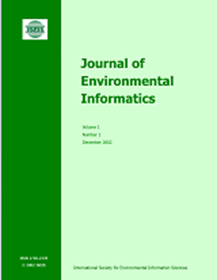结合科学事实和重要性标准预测环境影响评价结果
IF 5.4
1区 环境科学与生态学
Q1 ENVIRONMENTAL SCIENCES
引用次数: 1
摘要
。确定影响重要性的目的是确定影响的价值。环境影响评价审查是根据环境影响报告书或环境影响评价报告中所描述的有关环境、生态和社会经济影响的科学事实,判断影响重要性是否可以接受的过程。本文的第一个目的是从以往的评审结果中总结出显著性评价的标准,并利用基于模糊规则的系统将这些标准纳入科学事实。二是利用数据挖掘技术构建环境影响报告书或环境影响评价报告预测模型,对结果进行评审,帮助开发商提前编制和修订更好的环境管理方案。作者在2009年提出的预测模型的有效性为92.7%。考虑显著性标准后,本研究的增强效度可达到100.0%。在案例研究中,一些指标在一阶和二阶意义上是超标的,但在三阶意义上,所有指标最终都属于有条件批准的范畴。本文章由计算机程序翻译,如有差异,请以英文原文为准。
Combining Scientific Facts and Significance Criteria to Predict the Result of an Environmental Impact Assessment Review
. The purpose of determining impact significance is to place value on impacts. Environmental impact assessment review is a process that judges whether impact significance is acceptable or not in accordance with the scientific facts regarding environmental, ecological and socio-economical impacts described in environmental impact statements or environmental impact assessment reports. The first aim of this paper is to summarize the criteria of significance evaluation from the past review results and accordingly utilize fuzzy rule-based system to incorporate these criteria into scientific facts. The second aim is to employ data mining technique to construct an environmental impact statement or environmental impact assessment report prediction model for reviewing results which can assist developers to prepare and revise better environmental management plans in advance. The validity of the previous prediction model proposed by authors in 2009 is 92.7%. The enhanced validity in this study can attain 100.0% after taking significance criteria into account. In the case study, some indicators are over-standard in first and second-order significance but all indicators ultimately fall into the category of conditional approval in third-order significance.
求助全文
通过发布文献求助,成功后即可免费获取论文全文。
去求助
来源期刊

Journal of Environmental Informatics
ENVIRONMENTAL SCIENCES-
CiteScore
12.40
自引率
2.90%
发文量
7
审稿时长
24 months
期刊介绍:
Journal of Environmental Informatics (JEI) is an international, peer-reviewed, and interdisciplinary publication designed to foster research innovation and discovery on basic science and information technology for addressing various environmental problems. The journal aims to motivate and enhance the integration of science and technology to help develop sustainable solutions that are consensus-oriented, risk-informed, scientifically-based and cost-effective. JEI serves researchers, educators and practitioners who are interested in theoretical and/or applied aspects of environmental science, regardless of disciplinary boundaries. The topics addressed by the journal include:
- Planning of energy, environmental and ecological management systems
- Simulation, optimization and Environmental decision support
- Environmental geomatics - GIS, RS and other spatial information technologies
- Informatics for environmental chemistry and biochemistry
- Environmental applications of functional materials
- Environmental phenomena at atomic, molecular and macromolecular scales
- Modeling of chemical, biological and environmental processes
- Modeling of biotechnological systems for enhanced pollution mitigation
- Computer graphics and visualization for environmental decision support
- Artificial intelligence and expert systems for environmental applications
- Environmental statistics and risk analysis
- Climate modeling, downscaling, impact assessment, and adaptation planning
- Other areas of environmental systems science and information technology.
 求助内容:
求助内容: 应助结果提醒方式:
应助结果提醒方式:


